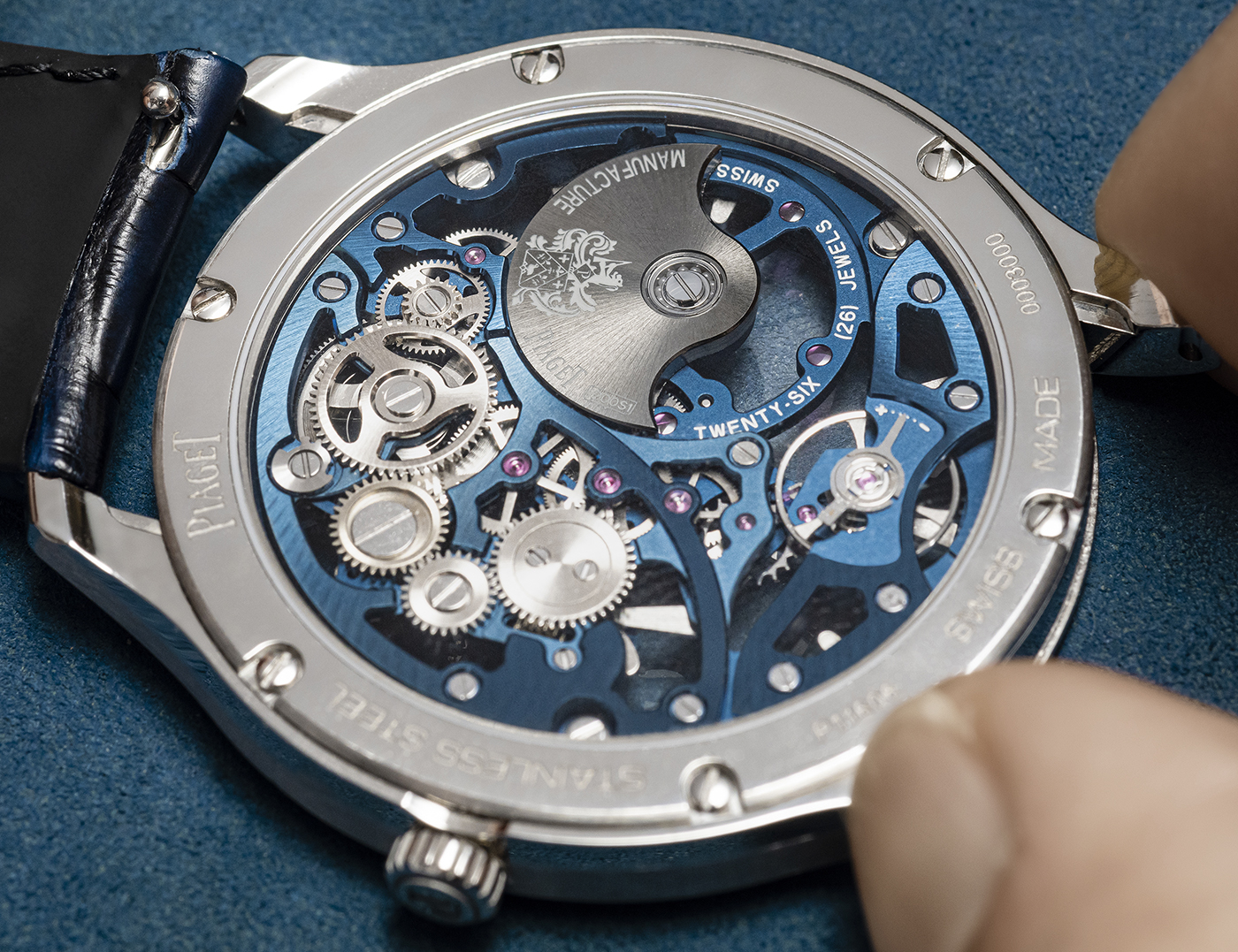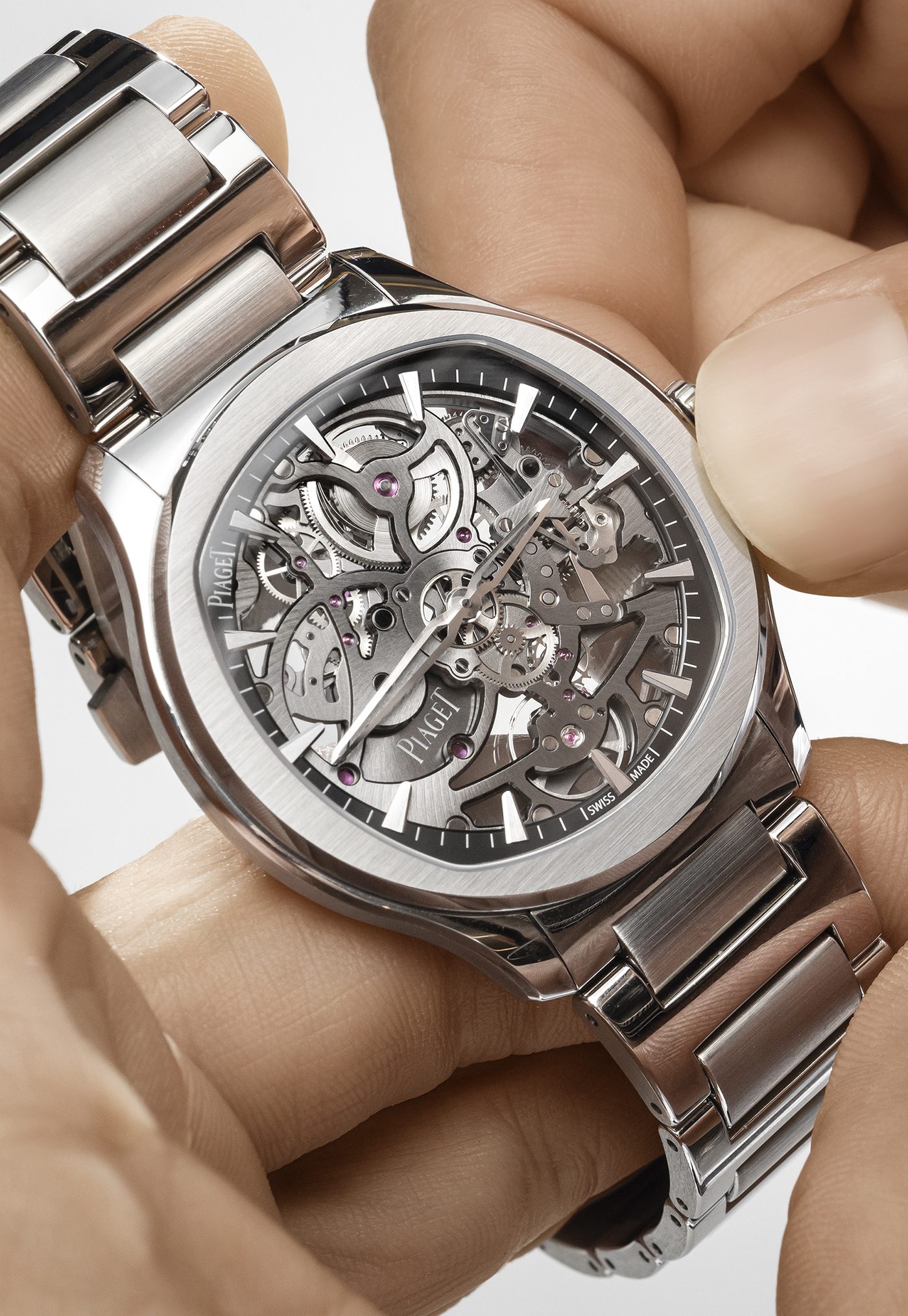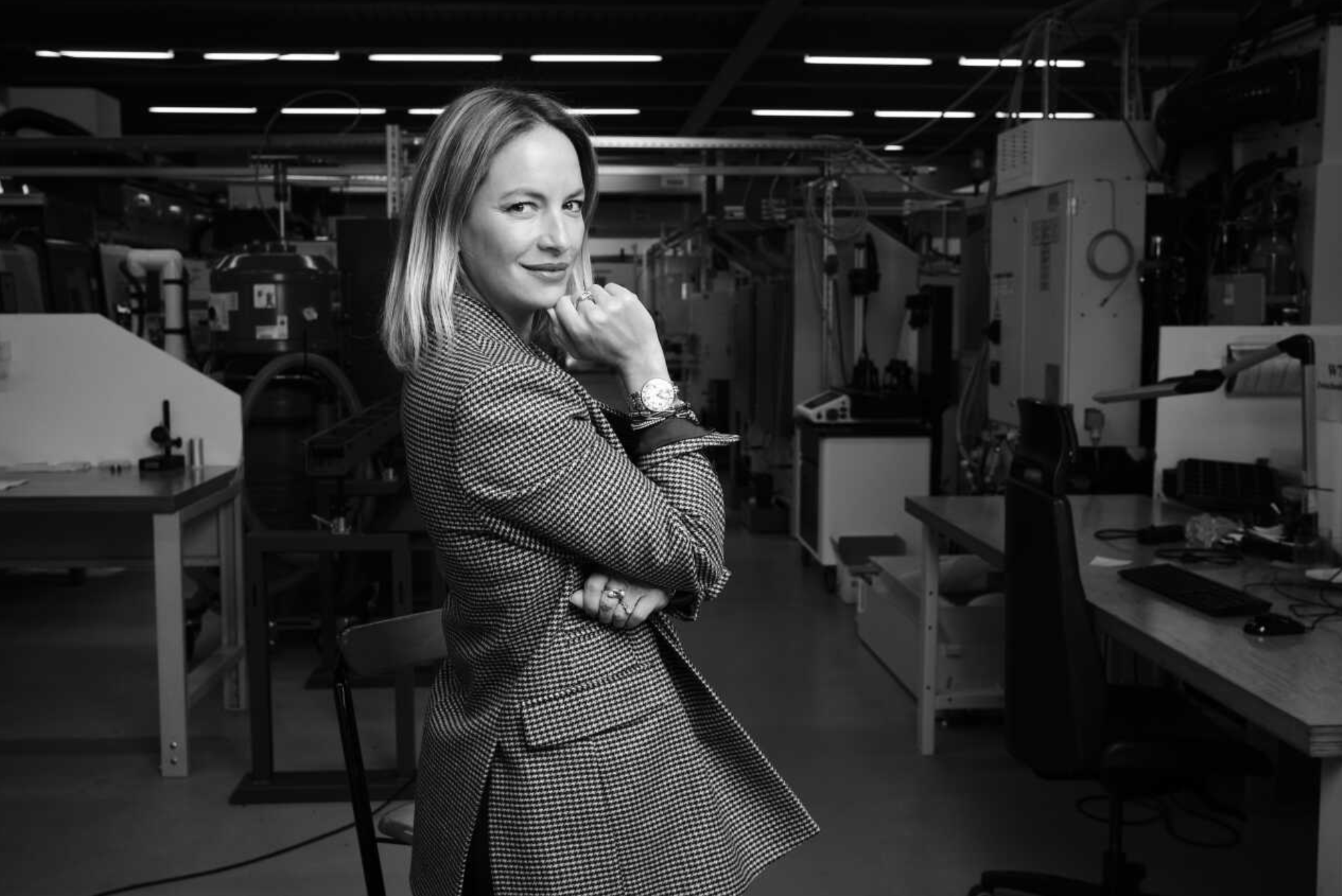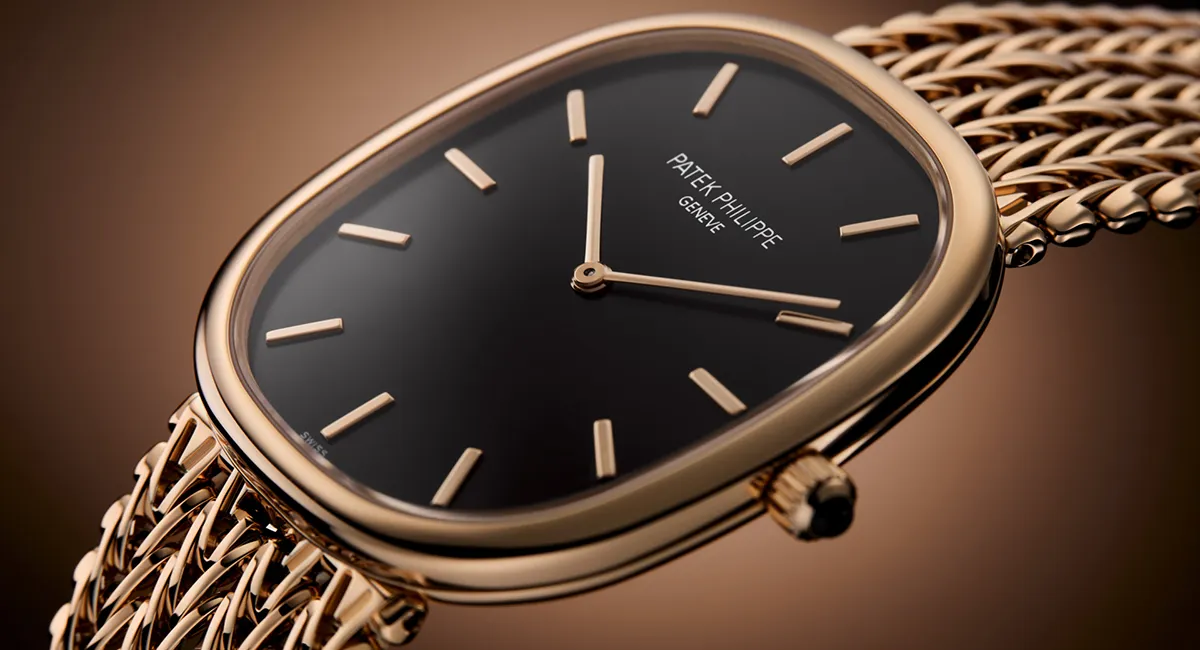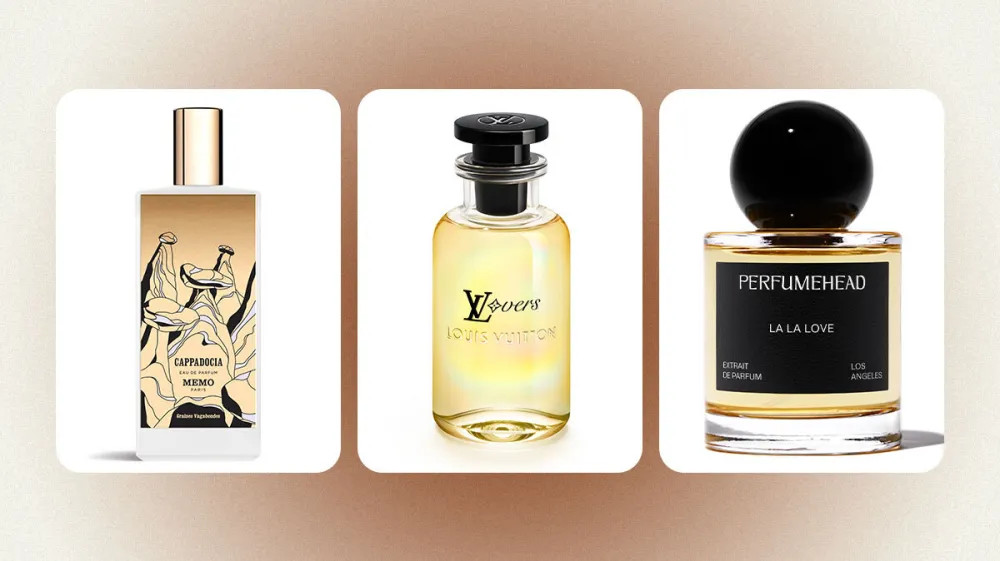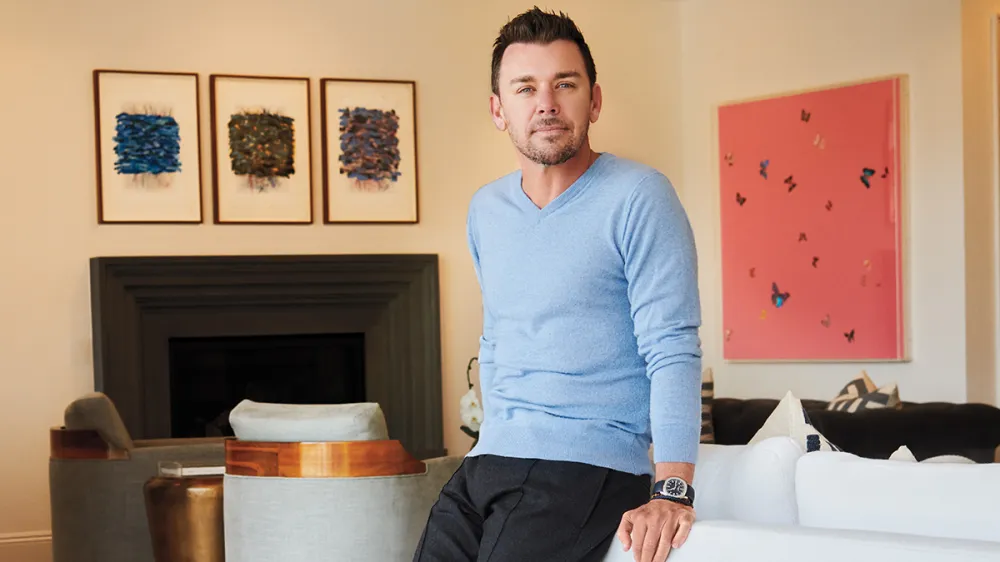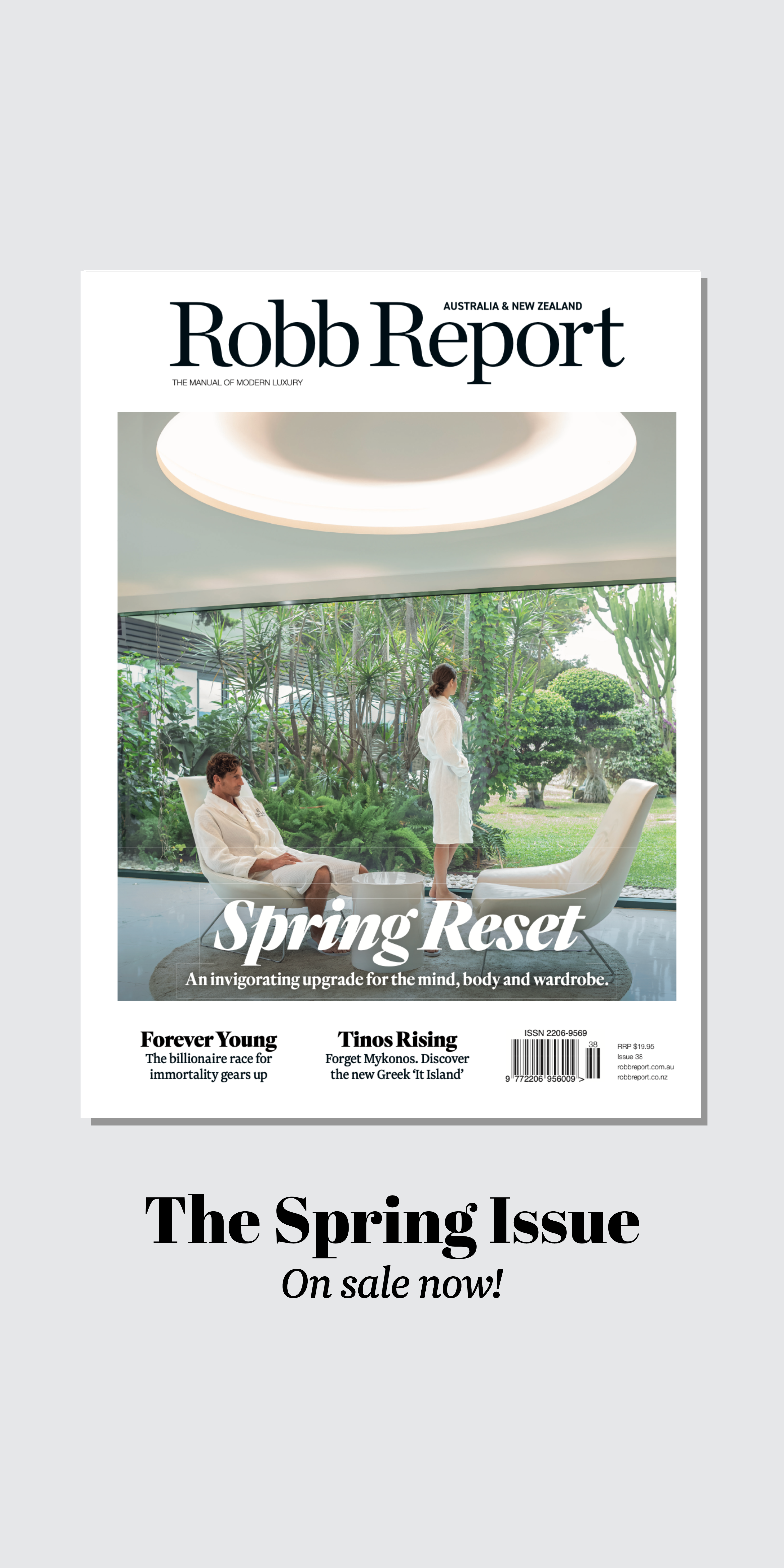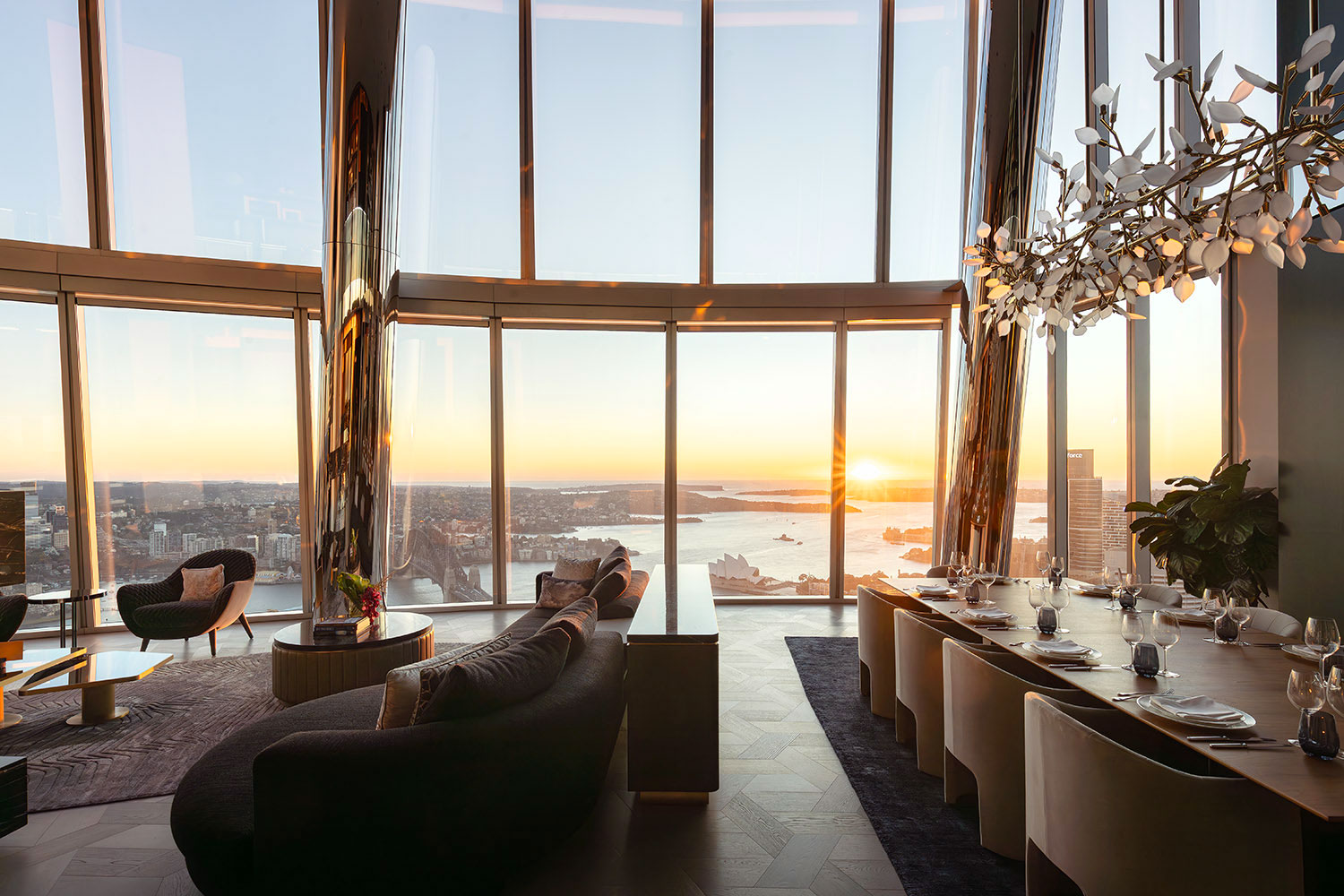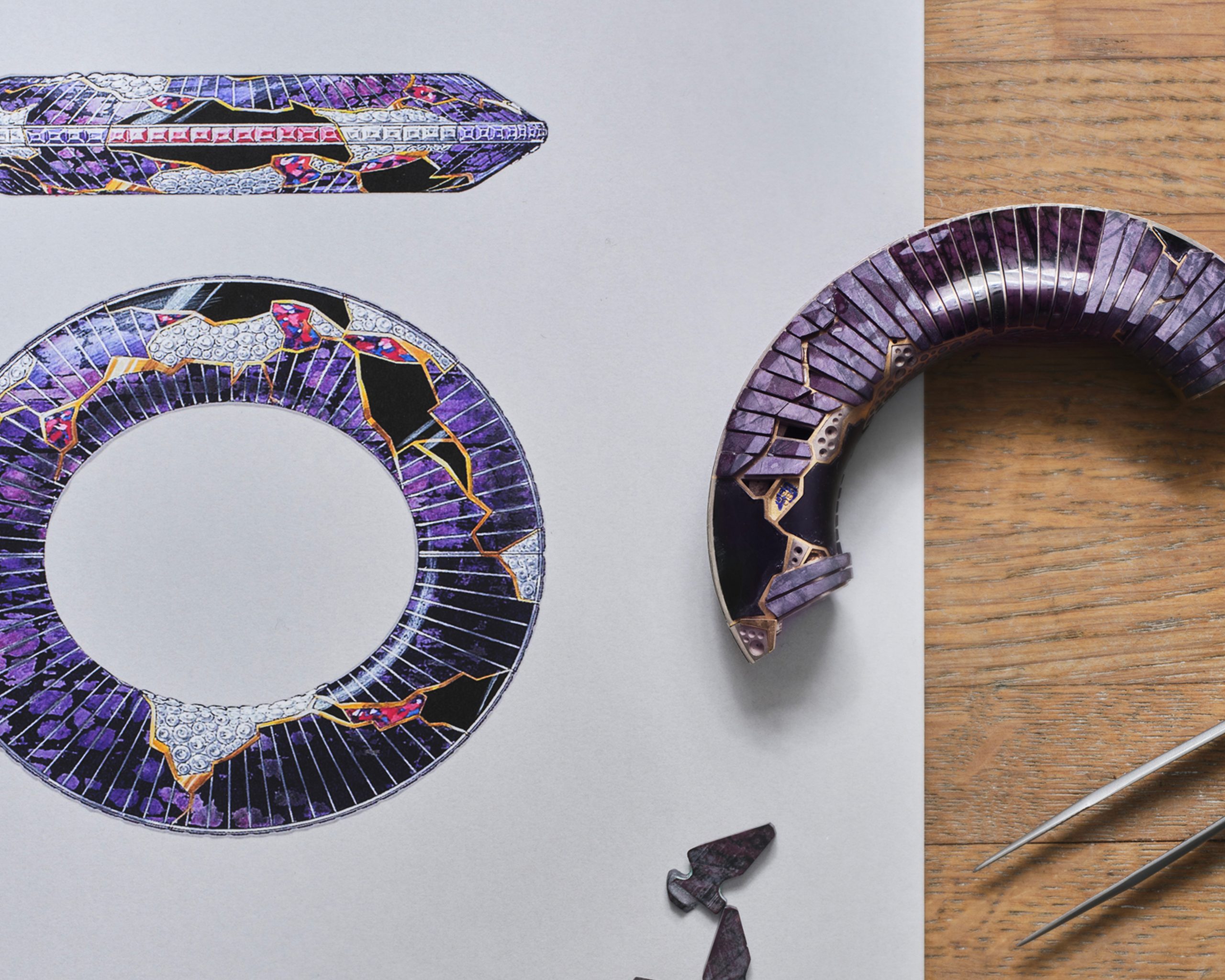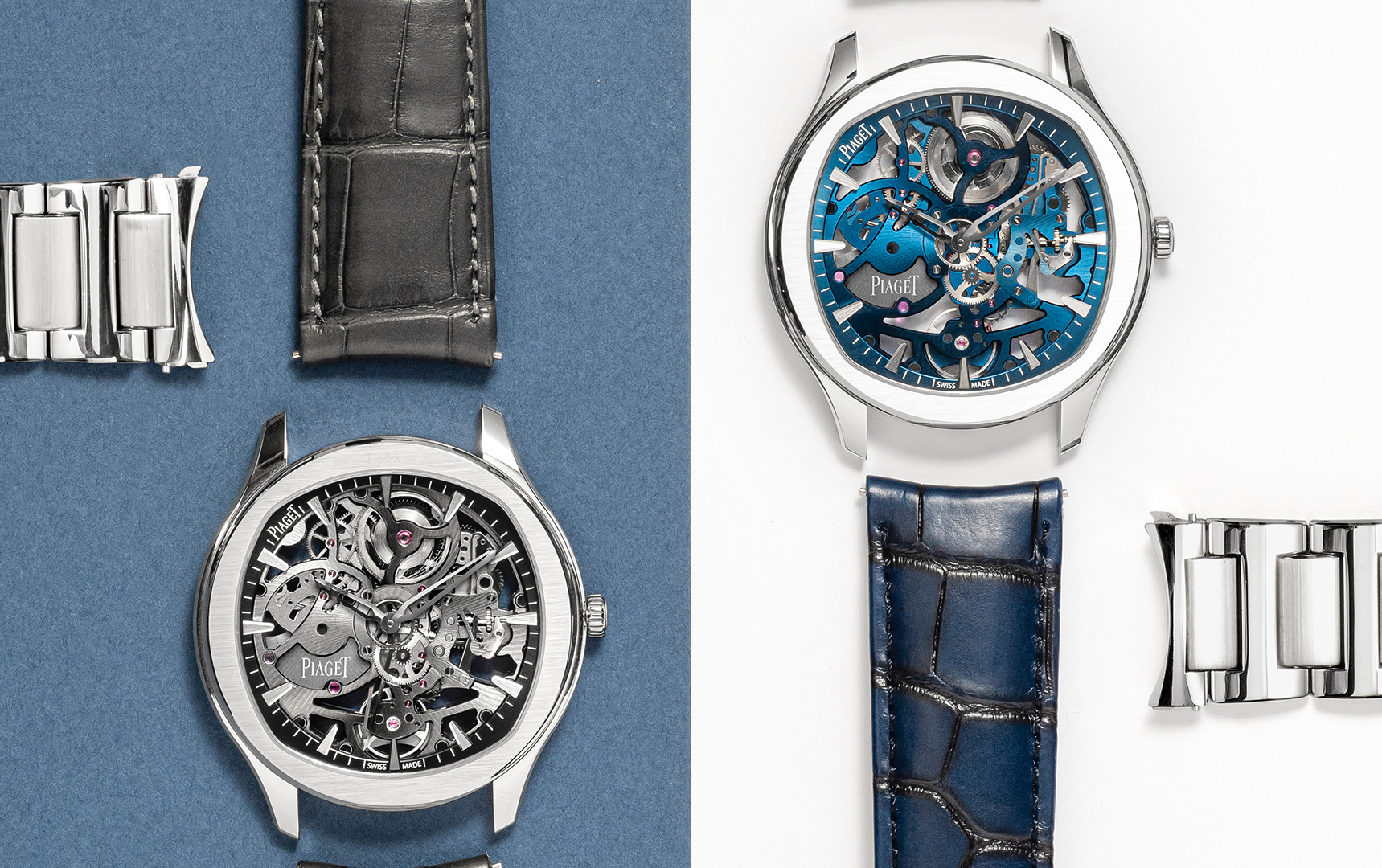
Piaget Unveils The Polo Skeleton
The Swiss manufacture goes thinner again with its latest timepiece.
Related articles
The world of sport watches is getting more complicated by the minute, and Piaget’s Polo Skeleton watch is no exception.
However, what the Polo Skeleton offers is an alternative. The Gérald Genta inspired timepiece has long been the ‘other’ in a busy field of sports watches, and while it certainly has its supporters – built on the back of Piaget’s meticulously build quality and the timepiece’s sleek styling – its latest offering makes for a dramatic openworked addition to the range.
Utilising the same 42mm steel case of the Polo line, the skeleton watch arrives at an astonishingly svelte 6.5mm thick, down from an already thin 9.4mm of the Polo S. Impressive, yet not surprising from the manufacture with the current thinnest calibre in the world in the Piaget Altiplano. Although the extra thin build comes at the expense of water resistance, down to 30-metres from the previous Polo’s 100-metre capabilities.
The Piaget Polo Skeleton sees the openworked design arrives in both graphite grey and a dynamic cobalt blue and detailed in a number of satin brushing and radial finishes that give the timepiece a sense of uniqueness in the market. Further elevating the watch is Piaget’s dial layout in which the nameplate utilises the mainspring barrel, balance wheel, escapement, gear train and signed microrotor within the space, merging together dial and movement.
Naturally, the timepiece uses an in-house build movement, with the watch acting as a testbed for its new 1200S1 microrotor automatic skeleton movement – which offers a 44-hour power reserve.
A number of strap options are available including the Polo’s mirror polished h-link bracelet – in stainless steel – alongside alligator leather straps matching the respective dial colours.
The Piaget Polo Skeleton will set you back $45,500.
Subscribe to the Newsletter
Recommended for you
First Among Equals
Women are an emerging force in the watch-buying market, but their influence hasn’t been reflected at executive level—until now. The She-suite are coming.
By Alex Cheney
October 18, 2024
10 Impossibly Elegant Dress Watches to Wear at Your Black-Tie Holiday Party
Next-level dress watches to spruce up your tux from Cartier and Vacheron Constantin to Piaget and more.
Published on October 10, 2024
By Carol Besler
October 17, 2024
You may also like.
You may also like.
Entrepreneur Blake Johnson on Buying a Soccer Team, His 1969 Bronco and His Favourite Watch
The self-made businessman went from working on a ranch to launching businesses worth over $2 billion.
Johnson’s rise, from waking at 3.00 am to work cattle on his family’s California ranch to becoming a self-made billionaire, began at school—but not necessarily in the classroom. “I remember running round corners trying not to get caught selling lollipops,” he says. At 47, Johnson has created and sold businesses for a combined total of around $2.3 billion. His direct-to-consumer orthodontics provider, Byte, reached a billion US dollars ($1.5 billion) in valuation without any external investment; Alter, a fitness brand focusing on DNA and daily biometrics, “is on a trajectory to exceed that number by multiples”, he says. His seventh enterprise—a consumer-finance company, Forma—has just launched.
Success has allowed Johnson to explore passions including art, watches, pens and philanthropy. “I’ve had so many lucky breaks along the way—especially at the age when the concrete is still wet, so to speak—and I’ve always felt compelled to give back,” he says. Beneficiaries include International Justice Mission, Heart of Los Angeles (HOLA), and various arts, science and educational establishments.
Johnson is perpetually on the move but finds himself returning to a long-term aim: “I’ve become obsessed with starting a school for kids from 12 to 20 years old. I believe I can fix core problems existing in our education system.”
What have you done recently for the first time?
Became an owner of a sports team. I invested in a UK soccer club called Hampton & Richmond Borough FC. I went out there to go to a game in January, but the pitch was frozen.
First thing you do in the morning?
I like to knock out the items I’m least looking forward to: from workouts to analysing financials to difficult decisions and hard conversations.
Do you have any personal rituals?
I love to travel by myself. I appreciate travelling with my family and friends, but being on the road solo is liberating. I’m perpetually curious and yearn to see what’s over that next hill and meet the next person.
What do you do that’s still analog?
I have a collection of fountain pens, each filled with a specific brown ink, and I keep cream-coloured stationery and cards to write letters on. I write in cursive script and take great care with each presentation. It’s becoming a lost art, but one that I’ll never let go of.
What in your wardrobe do you wear most often?
I’m not shy to rock a scarf any chance I can. I’m a sucker for Loro Piana. I’m headed to Africa tonight, and the family member I’m travelling with joked that I needed to pack an extra suitcase for all my scarves.
Drive or be driven?
Nothing makes me happier than being behind the wheel, but I’m now driven the majority of the time. I own a few cars, including a 1969 Icon Bronco. It’s a real head-turner. You’re driving along and people are honking and giving you thumbs-up. The car I’m driven in mostly is a [Cadillac] Escalade.

Jeff Lipsky
What’s your favourite cocktail, and how do you make it?
Year-round in Southern California: tequila with a splash of soda water and a slice of orange. Summers in Lake Como: negronis. Winters in England: elevenses with the boys. Mexico: cerveza with tobala mezcal neat.
Who is your dealer, and what do they source for you?
CJ, hailing from London and Monaco, is well on his way to becoming the biggest contemporary-art dealer on the planet, and I find myself heavily following his lead on blue-chip artists.
What’s the most recent thing you’ve added to your collection?
A piece by George Condo, Mr. & Mrs. Strange. You see some great artists—from Richard Prince to Damien Hirst—shift their style. This one blended an old style with a new style on the same canvas.
What’s the most recent thing you regret not buying?
More real estate in 2021, when it was better to be lucky than to be good. I had my eye on a ranch in Colorado that I passed on, and I still mourn it weekly. It’s funny, they say you spend your early adult life running away from your childhood and your later adult life running back to it.
How do you get to sleep?
I fall asleep within 30 seconds of my head hitting the pillow. I’m an early-to-bed, super-early-to-rise guy. It comes from having to get up at 3.05 am daily to work cattle in my youth.
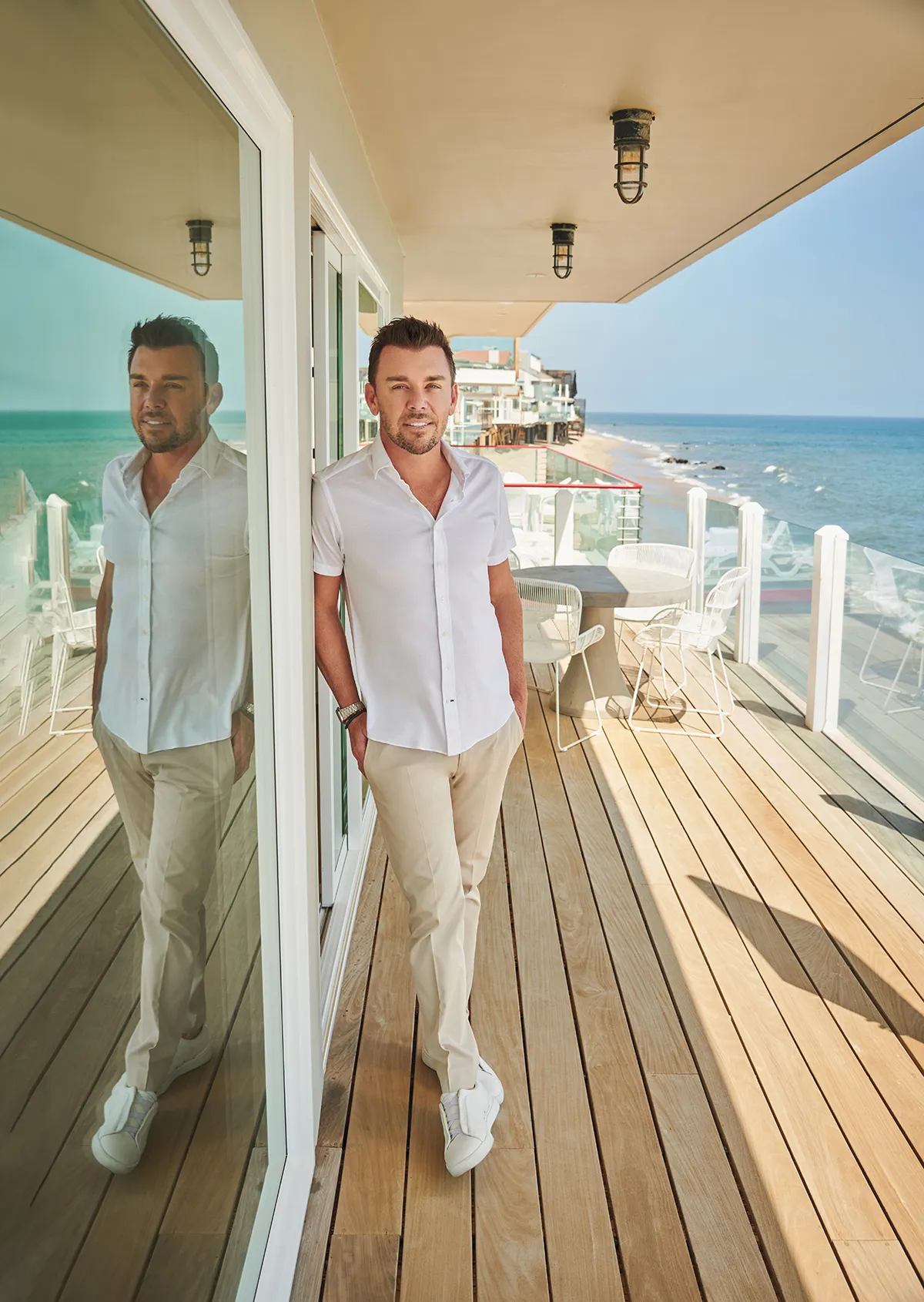
What does success look like to you?
My views of success constantly change. Having my children balanced with broad perspectives and fundamentally strong characters is top of the list.
Who is your guru?
I’ve always prided myself on not having one and carving my own way through life. However, I’ve recently had the good fortune to spend days with Guy Ritchie at Ashcombe, his estate in England. Brief moments of conversation with him have forever changed my views on life and humanity. His EQ [emotional quotient, more commonly known as emotional intelligence] is off the charts.
Are you wearing a watch?
Yes, a Patek Nautilus 5976—my favourite piece out of around 25 I own.
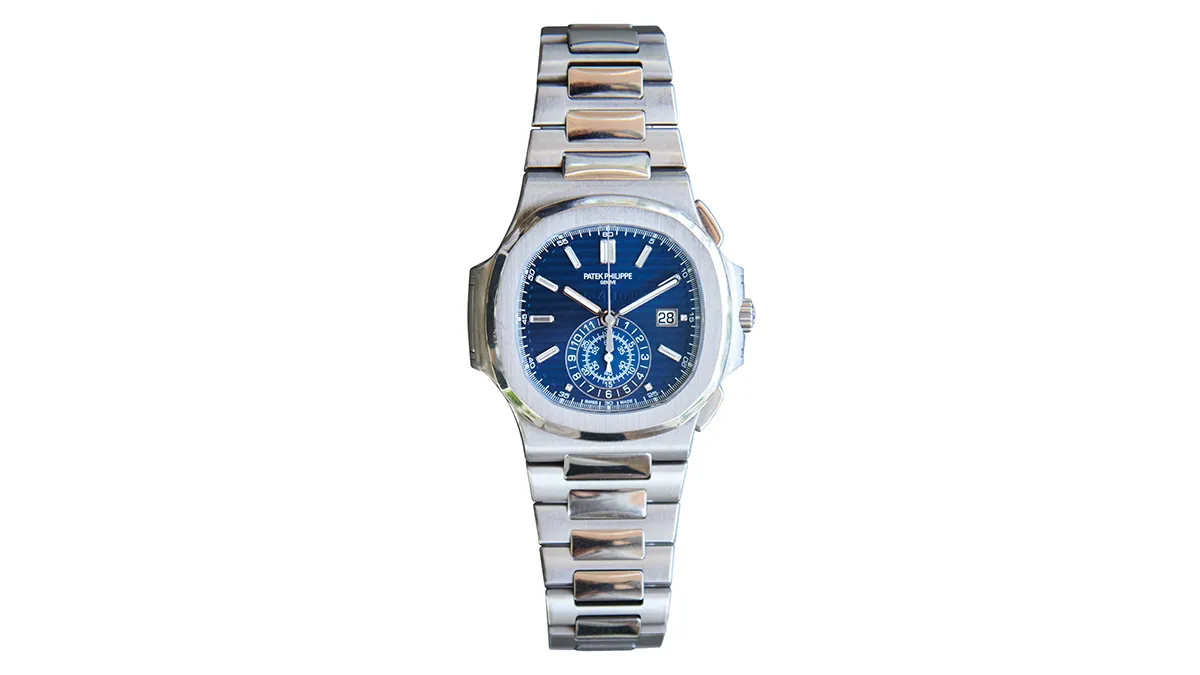
Jeff Lipsky
How would you describe your look?
Multifaceted. I love British sophistication, Italian understated elegance, American Western wear. But most importantly, I love a good tailor. Regardless of style, if it’s not fitted, it’s not right.
What’s your favourite hotel?
It’s a tie between the Mandarin Oriental in Lake Como, the Brando in French Polynesia and Claridge’s in London.
Who do you admire most in the world?
I admire those who live [in] the arena, whose faces are weathered by hard work, valiant efforts and material results. I admire anyone with grit, the nimbleness to think on their feet and a strong positive attitude.
Last piece of advice you gave?
There are three essentials in life: something to do, something to love and something to hope for. If you’re missing one, life will be out of balance.
And the last advice you were given?
Grasp the difference between jungle and zoo lions. Independence is earned, dependence is free. No one ever did anything impressive in the zoo.
What kind of music makes you happy?
From George Strait and Chris Stapleton to Maná or Luis Miguel to George Michael and ’80s pop to Motown and [Norwegian DJ] Kygo and other EDM.
You may also like.
18/10/2024
By Alex Cheney
18/10/2024
Follow Your Nose
Embark on an olfactory adventure with these location-inspired scents.
At the end of a memorable visit to the Dominican Republic, Robert Gerstner decided to commission a souvenir. He’d been fascinated by the aromas of cigars being rolled and boxed during a factory tour, so he asked his friend and travelling companion, the perfumer Bertrand Duchaufour, if he could bottle the scent.
“I didn’t really think there were any great tobacco fragrances out there,” Gerstner says, and he would know. For nearly 30 years he’s run Aedes, a New York City perfume shop that offers exclusive scents, including an in-house collection called Aedes de Venustas. The newest, Café Tabac, debuted last December and is the product of Duchaufour’s efforts. It’s named for the Big Apple’s long-shuttered supermodel hangout, but the scent is redolent of the Dominican Republic’s key export.
Since then, a raft of houses have launched scents that are either directly evocative of, or otherwise inspired by, specific destinations—a trend that makes sense given our near-insatiable thirst for visiting new places. “Locations are one of the main things fragrances stir up in you,” Gerstner says.
“It just happens that you get inspired by travelling.”
Arquiste A Grove by the Sea
Lopud, Croatia
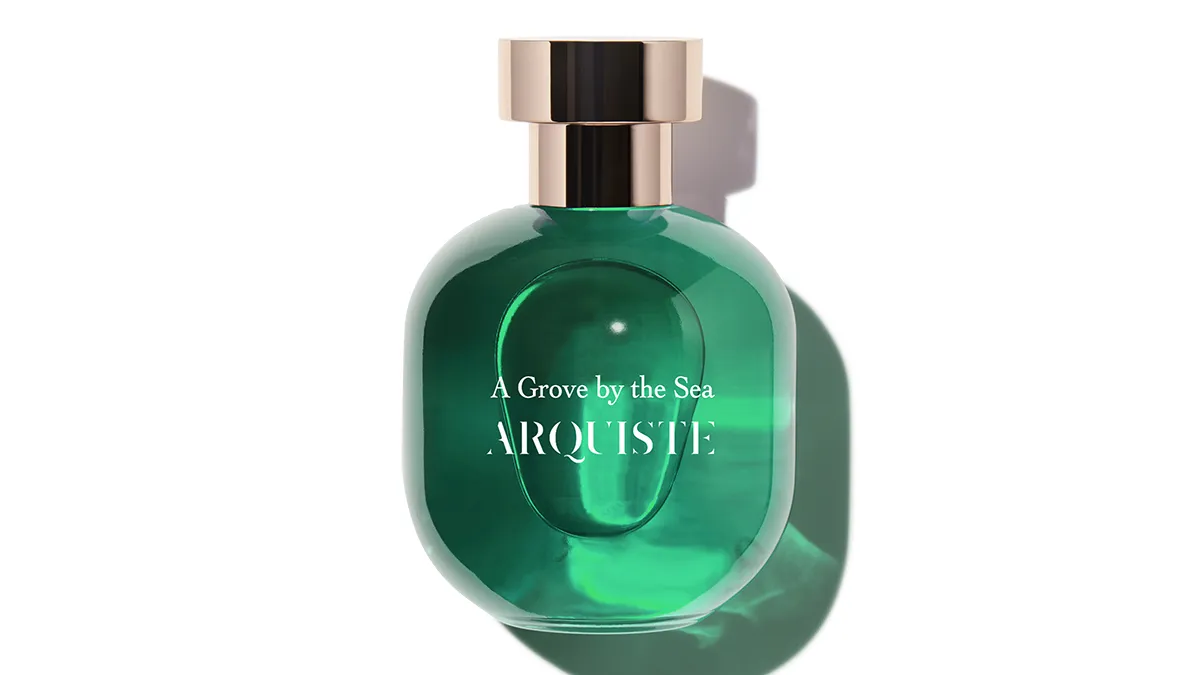
This small island in the Adriatic Sea has forests of pine, cypress and some of the tallest palms in Europe. The scent, created with perfumer Rodrigo Flores-Roux, captures the sea air that blows through their leaves and fronds to combine with the crisp aroma of locally grown thyme, rosemary and figs. Around $330 for 100 ml
Louis Vuitton Lovers
Virginia, USA
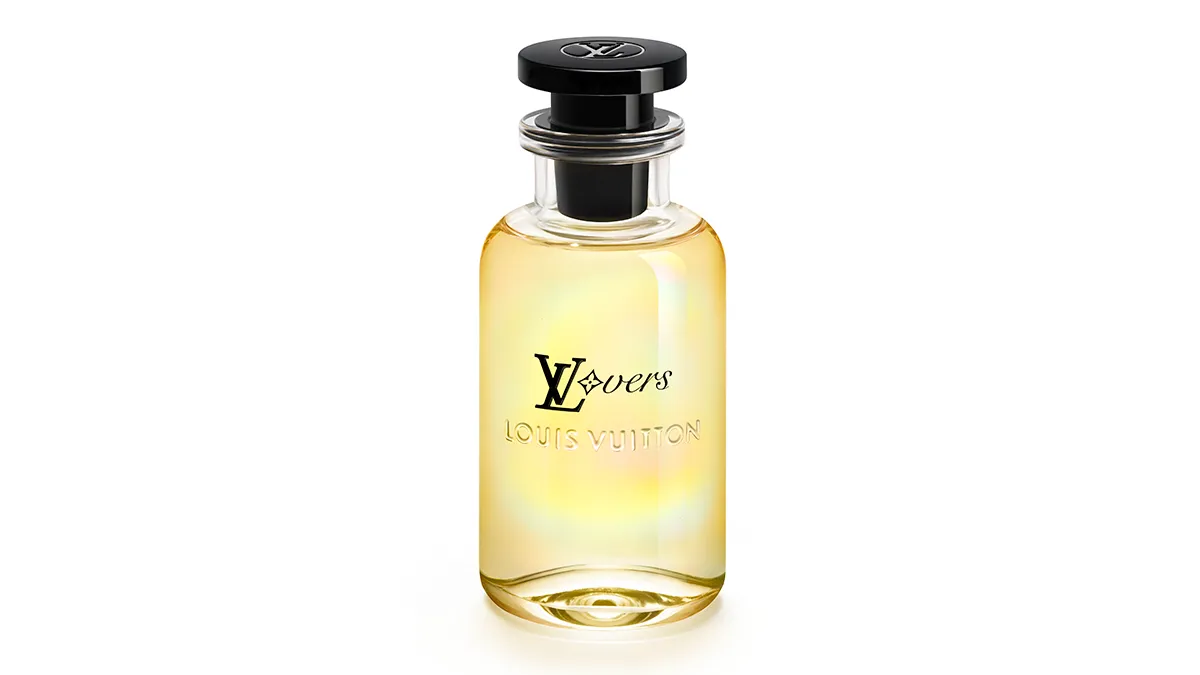
Pharrell Williams asked Vuitton’s in-house master perfumer Jacques Cavallier-Belletrud to capture the energy of sunshine. The result—named in reference to Williams’s home state, Virginia (which, they say, is for lovers)—is a bright, lively blend of galbanum, cedarwood, sandalwood and ginger. $535 for 100 ml
Perfumehead La La Love
Los Angeles, USA
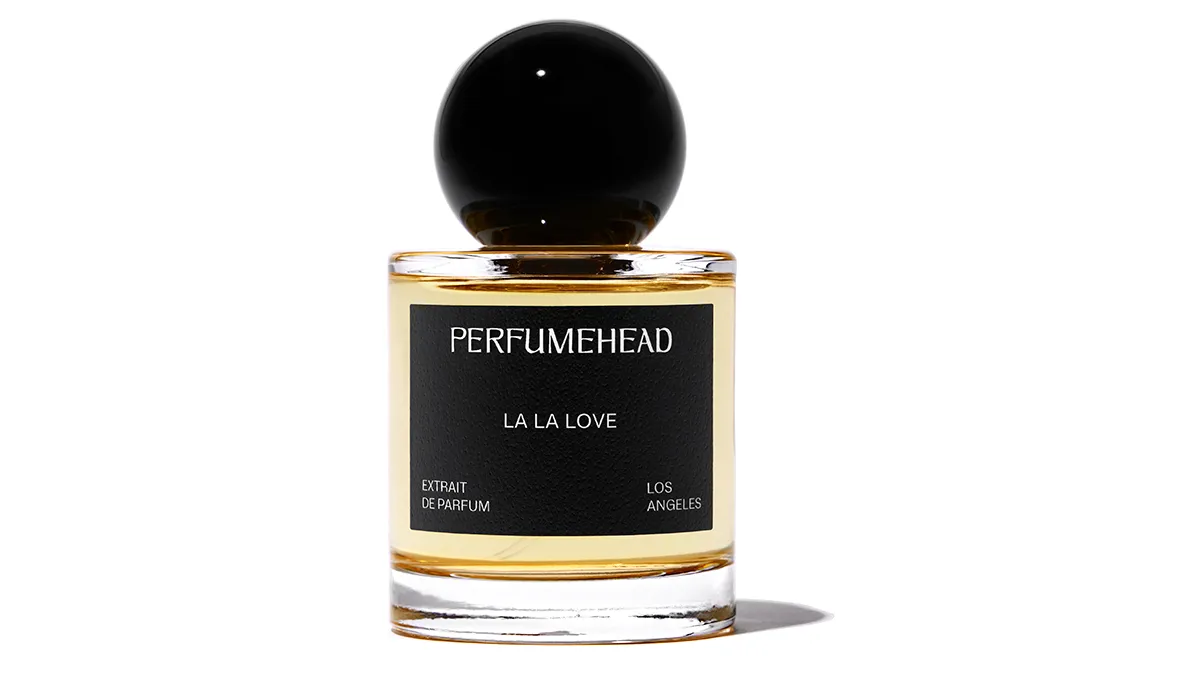
Consider this an olfactory ode to the City of Angels creatives who work as hard as they play. Perfumer Constance Georges-Picot’s gourmand concoction smells like a cocktail you could easily have one
too many of, with boozy Cognac notes mixing it up with vanilla absolute, incense, sandalwood and musk. Around $645 for 50 ml
Memo Paris Cappadocia
Cappadocia, Turkey
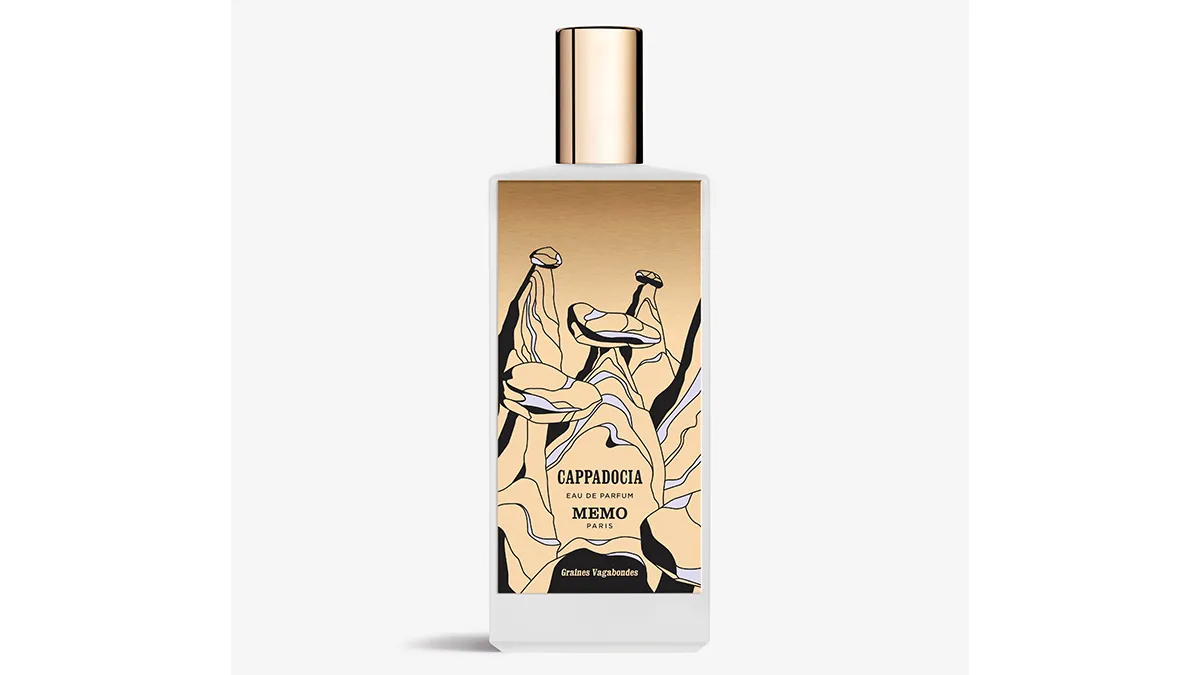
Turkey is among the world’s foremost saffron producers, and the spice’s earthy, tea-like scent takes centre stage in this effort by nose Gaël Montero. He balanced it with sandalwood, benzoin, myrrh and jasmine to create a warming scent that’s perfect for the cooler months but still works all year. $460 for 75 ml
Krigler Lindauer Löwe 08
Lindau, Germany
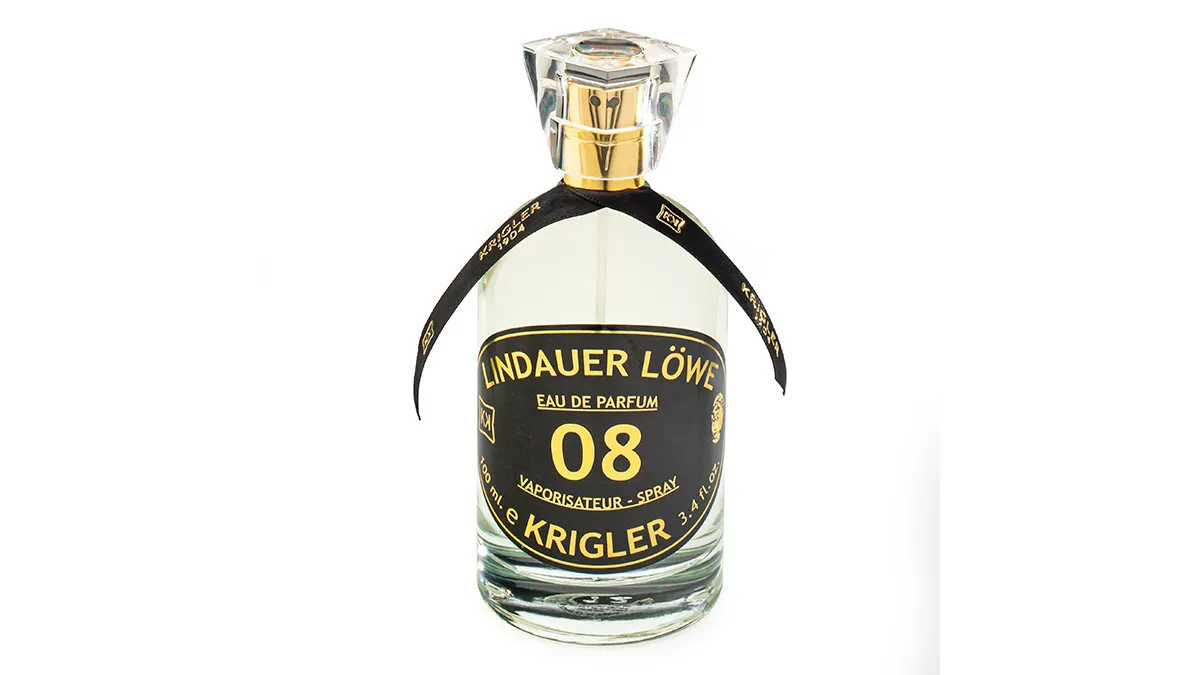
Bavaria’s answer to Capri, Lindau is a colourful island-resort town on the eastern edge of Lake Constance. Perfumer Albert Krigler loved it here so much that he dedicated a scent to the destination in 1908. His great-grandson Ben recently re-released the juice—a combination of green tea, geranium, amber and cedarwood—just this June. Around $960 for 100 ml
ILLUSTRATIONS BY Peter Oumanski
You may also like.
First Among Equals
Women are an emerging force in the watch-buying market, but their influence hasn’t been reflected at executive level—until now. The She-suite are coming.
In an era when fierce online conflicts against total strangers are normalised, where the posting of a cat meme on Instagram can spark World War III, it should come as no surprise that the modern horological battleground is equally heated—especially the moment conversations around gender enter the fray. Should women wear men’s watches? Why are brands bothering to make unisex timepieces? What’s the correct wrist-to-watch ration on a lady? Do women even like watches? At any given time, all these questions and more are bandied around social media and internet forums of varying degrees of sageness. Australian women may have secured suffrage over 100 years ago, but their right to adorn their wrists with anything they see fit is clearly not sacrosanct.
What’s not up for debate, however, is that an increasing number of women continue to enter the global space as enthusiasts, collectors and buyers, undeterred by the surrounding noise. Global market research firm Allied Market Research estimates that by 2027, the women’s watch segment will be worth around $39.6 billion. And according to the watch platform Chrono24, the proportion of women who bought luxury watches of at least 40 mm in diameter—around the starting size point for a typical men’s timepiece—grew from 21 percent to 35 percent between 2019 and 2023.
Granted, numbers of this magnitude have piqued the interest of most major brands. But behind the gleaming boutique facades and slick advertising campaigns there remains a dearth of women in senior leadership positions. CPIH, a group that represents the interests of the Swiss watch industry, reports that only 17 percent of the top horology jobs are held by women.
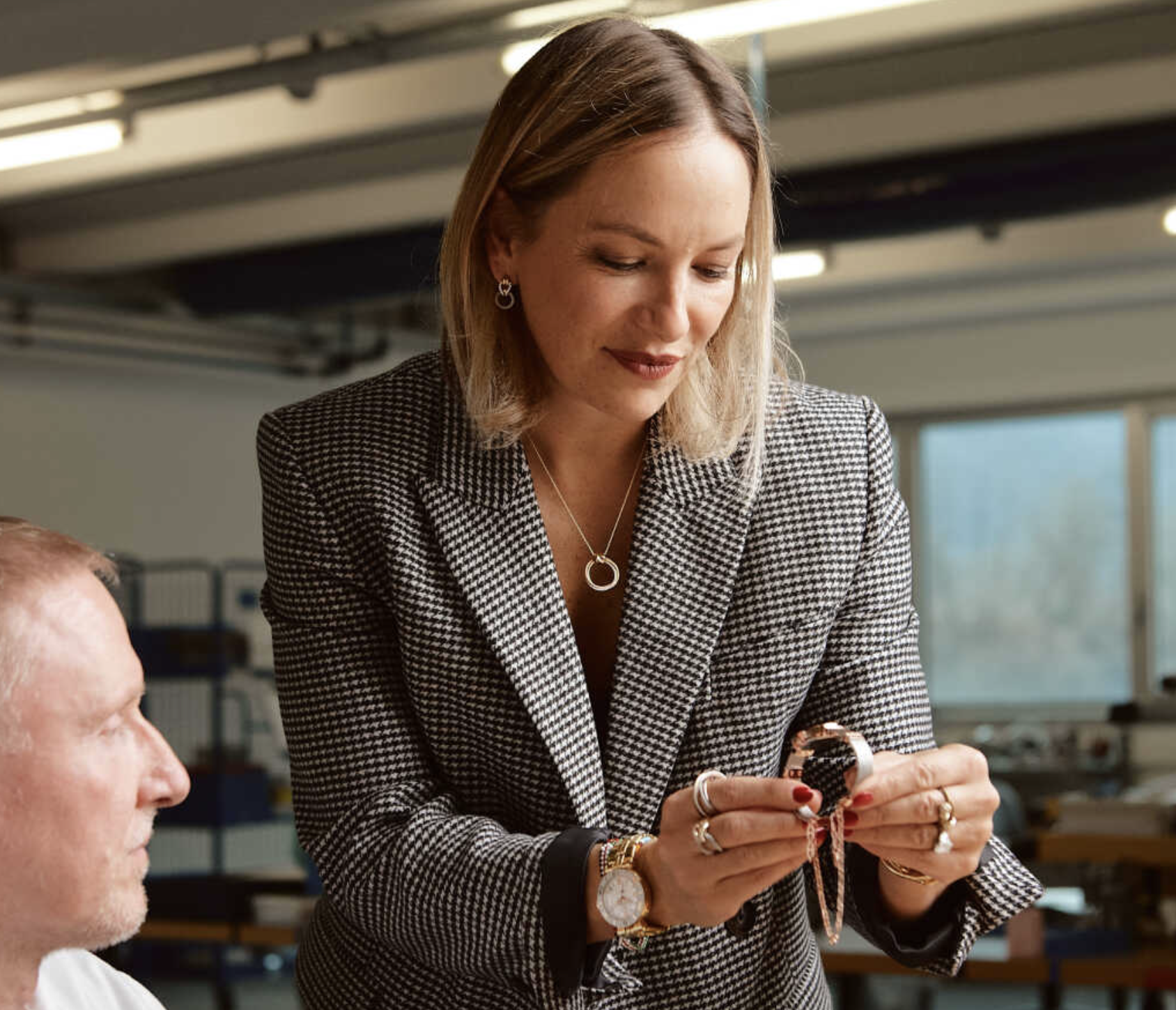
“At the top of the pyramid, in the C-suite, we’re very few,” confirms Coralie Charriol, chairman and CEO of Charriol, the Geneva-based watch company started by her father Philippe Charriol in 1983. “There’s long been women in the manufacturing, marketing and sales sides. They’re just not at the top.”
“Being the boss is freakin’ hard” she continues. “You’re the decision maker. And I’ve made the decision to model my watches off of myself in the sense that I am trying to design for an active woman, a woman who has multiple roles in her life… of course there are many, many different kinds of women. You can’t design for everyone, but you hope that what you’re creating and your message is going to reach many people as possible.”
It’s no secret that throughout watchmaking history, male executives made and marketed timepieces that largely mirrored themselves in taste, and perhaps, appearance. But, as the watch segment enters a period of unprecedented growth—a report this year by Business Research Insights puts the industry’s market size at just over $200 billion by 2031—there are green shoots of hope that a more progressive outlook will spread across executive leadership, brand partnerships and marketing efforts.
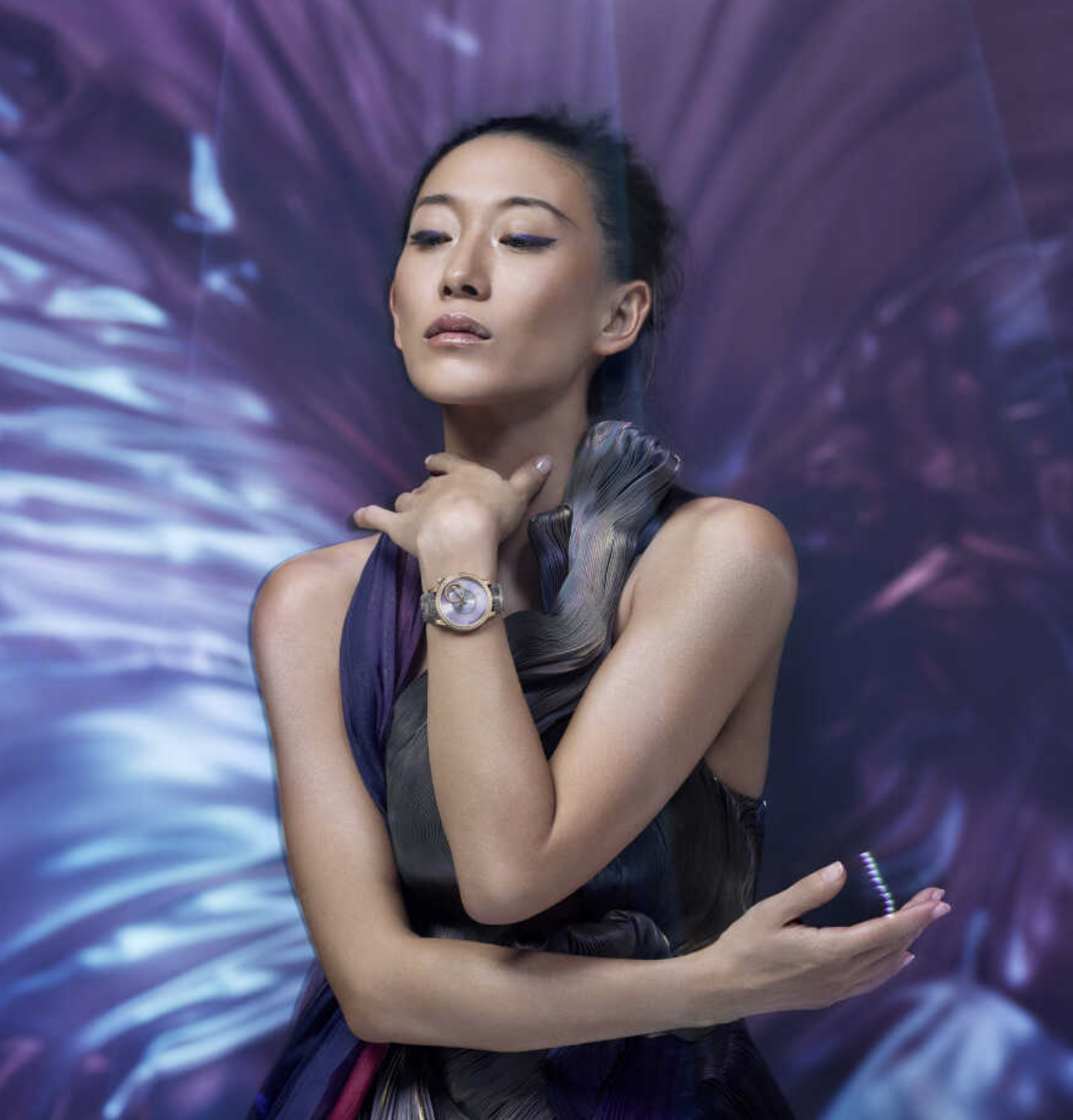
Take this year’s Watches & Wonders exhibition in Geneva, where one of the most talked-about novelties was Vacheron Constantin’s Égérie Pleats of Time concept watch. A collaboration with Yiqing Yin, a Paris-based female haute couturier and brand ambassador, the timepiece included a perfume-infused strap woven with mother-of-pearl shards. Alexandra Vogler, CMO of Vacheron Constantin, previously worked in the fragrance industry. “Merging culture and art and high watchmaking, this is very interesting,” she told Robb Report at the Swiss conference. “For me, these emotional dots I connected, I did so across three teams because I know when mixing creatives that’s how you get to birth new ideas.”
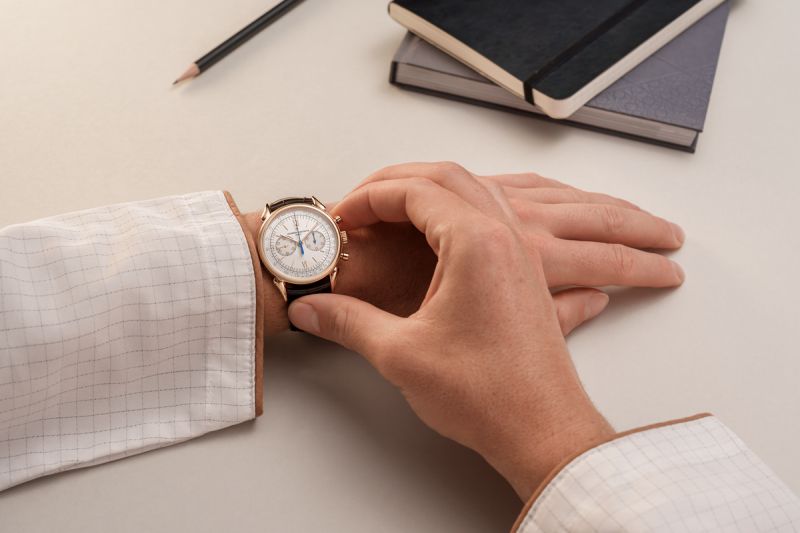
In Vogler’s roughly two years as CMO, she’s rebuilt the brand’s portfolio and announced a collaboration with the Metropolitan Museum of Art. The three-year agreement will support various educational initiatives and bespoke collaborations, including the creation of Vacheron Constantin timepieces inspired by artworks from The Met collection.
A few booths away stood Jaeger-LeCoultre’s CEO Catherine Rénier, who’d recently commissioned two-Michelin-star chef Himanshu Saini to create the Precision Atelier, a gastronomic experience that delves into the science of ingredients. Rénier, who since our chat has been tapped to be Van Cleef and Arpels’ new boss, remarked: “Watchmaking is a very niche, initiated world. So we open up this world to a larger audience through another field that will showcase similar values. And then of course, the artistic dimension is important because we do feel that more and more that the relationship to your timepiece is the same as a piece of art.”
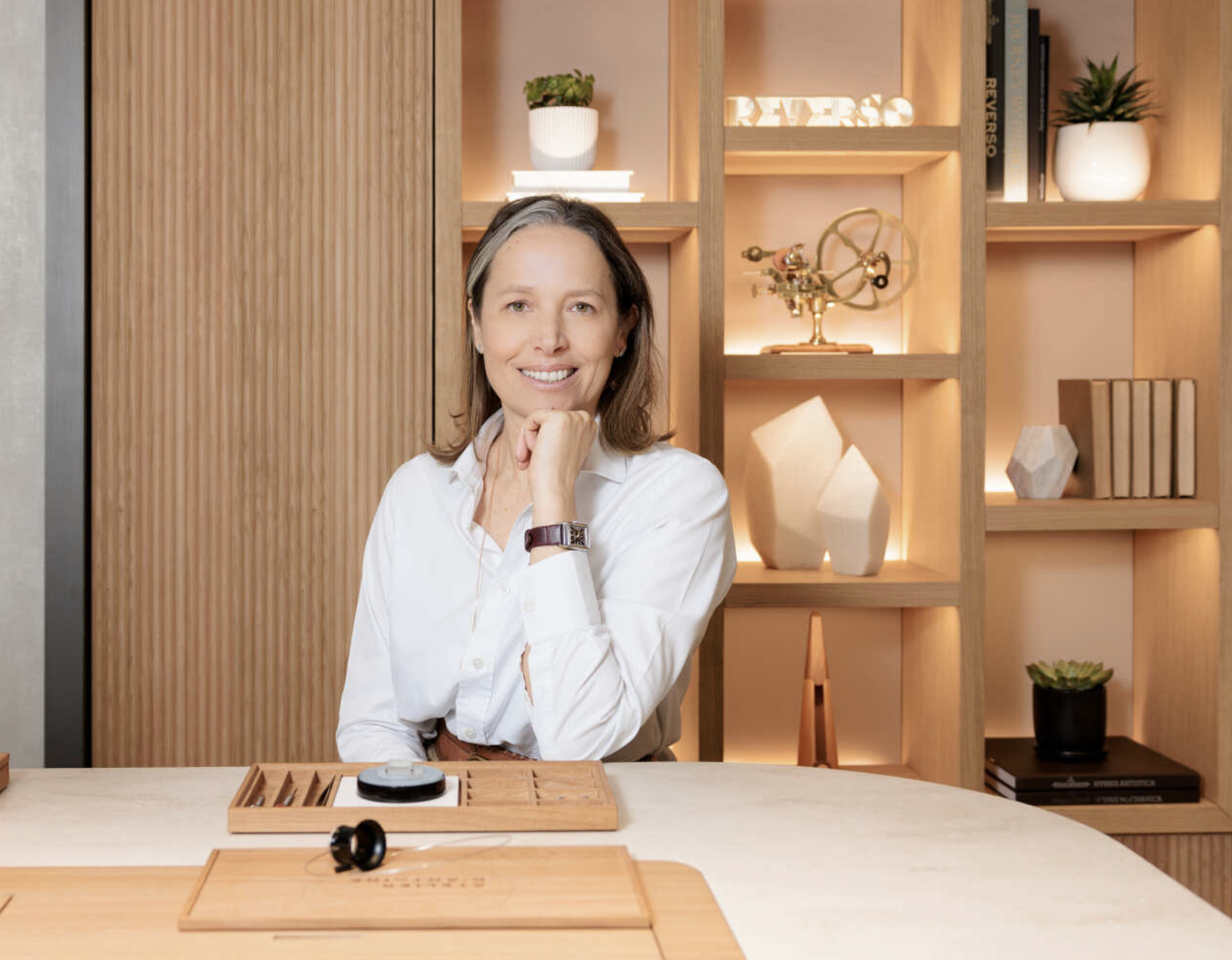
By incorporating voices from the spheres of fashion, culinary and fragrance—different domains, sure, but with shared values like precision, beauty and expertise—more varied connections to watch brands are formed beyond customers strictly interested in horology, who historically have skewed male. “I believe that you cannot talk to women the same way you talk to men about watches,” insists Coralie Charriol. “They respond to different touchpoints.”
This formula has already begun producing dividends. In February, the six variations of the Chronomat collection from Victoria Beckham for Breitling debuted, complementing the British designer’s spring/summer 2024 collection. A month earlier at Paris Fashion Week, couturier Tamara Ralph dressed her models in a limited-edition Audemars Piguet Royal Oak Concept Flying Tourbillon. Quite a way for Ilaria Resta, the marque’s incoming CEO, to make a statement. (It’s worth noting, too, that Resta joins Ginny Wright, CEO of Audemars Piguet Americas, in the C-suite of the Swiss company)
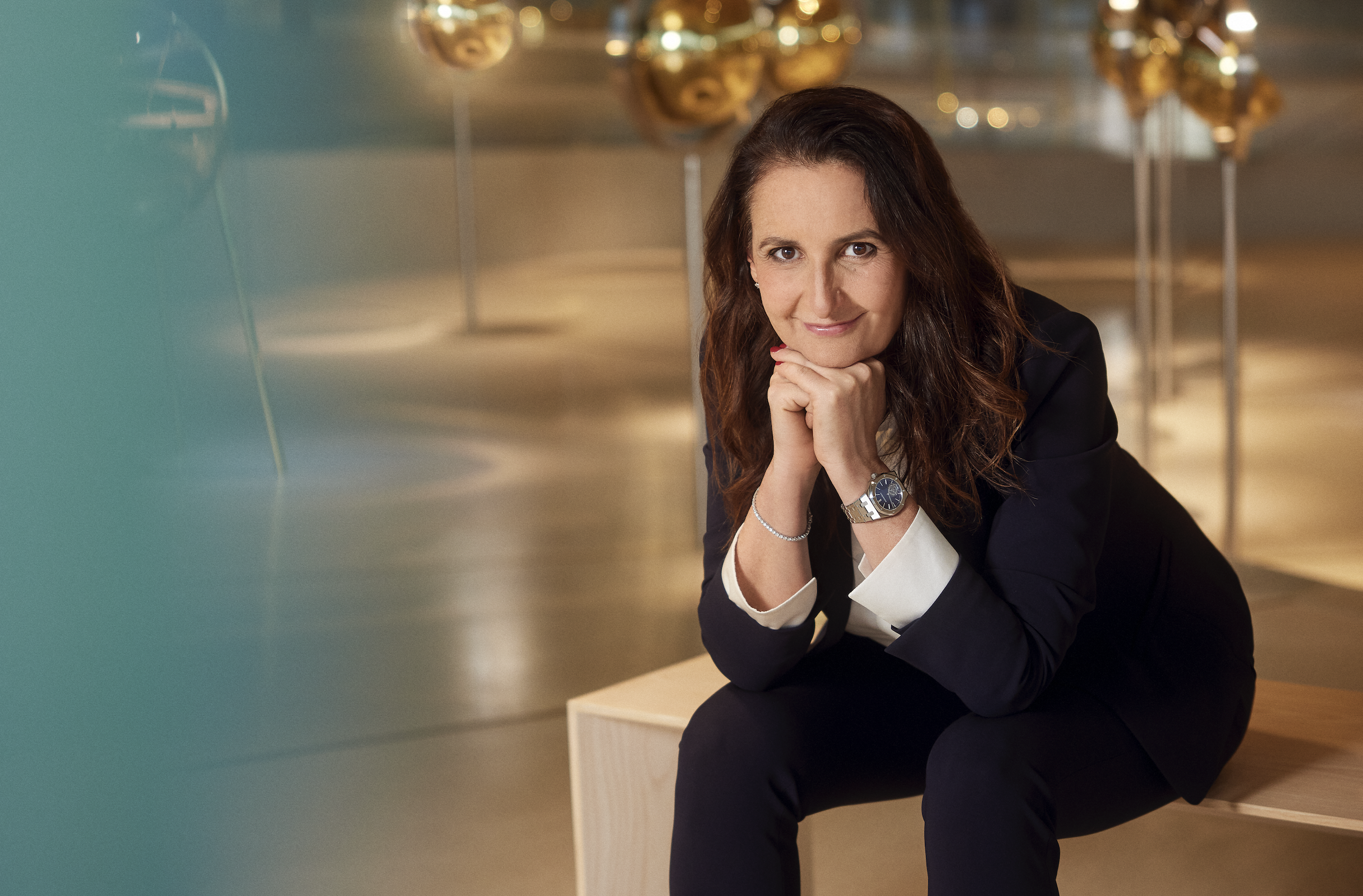
While fashion and fragrance are proving to be useful conduits for attracting more diverse audiences, female collectors are also expressing interest in more intricate timepieces.
“We have the opportunity to be in touch with more and more women and we are listening to what they want,” Resta told online magazine Revolution Watch in March (though, for the record, she declined an interview with Robb Reportfor this story). “There is a demand for complicated watches for women. The complications for women don’t necessarily have to be the same as those for men. I’ll give you an example. The Starwheel is an amazing watch that is very much loved by women. But at the moment, it only comes in a 41 mm diameter case. It is very appealing to women as a poetic representation of time and as a design statement, so of course we need to look into this.”
Female collectors throughout history, according to Vacheron Constantin’s Alexandra Vogler, have been rich veins of inspiration; in the 19th century, 30 percent of the letters received by the manufacture came from women. “We’ve had specific requests from our female clients for a rotating bezel, winding mechanisms. We have evidence in our archives demonstrating that women’s requests pushed the boundaries of innovation.”
Indeed, the history books show that women played a pivotal role in the development of modern timekeeping; it’s believed the first wristwatch was made for England’s Queen Elizabeth I in the 16th century, while in 1810, Caroline Bonaparte, the Queen of Naples, commissioned Louis Breguet to create a piece especially for her.
Perhaps, internet trolls, women are the original watch bosses after all.
You may also like.
The Art of Cartier
The Maison des Métiers d’art plays a pivotal role in preserving Cartier’s most special bodies of expertise.
Cartier is a brand synonymous with lavish city living. Yet despite its swathe of multi-storey monuments to all things brilliant, it’s a rather unassuming Maison, set amidst the rolling green fields of La Chaux-de-Fond, where the house’s most special brand of magic is woven.
Seasoned connoisseurs of fine watches and jewellery are now well familiar with the works of the Maison des Métiers d’art—a special workshop set up by Cartier in late 2014 to serve as a temple of traditional craftsmanship. Home to a host of artisans, many of whom have been working for Cartier for years, it has since become the de facto birthplace for Cartier’s most limited and special creations, bridging the space between haute jewellery and high horology while providing a unique ecosystem where one can influence the other.
Now a decade into its significant life, the Maison des Métiers d’art is celebrating ten years of growth and evolution. It has transformed from a special preserve for a once-threatened generation of artisans into a place where a new set of pioneering artists and craftspeople can emerge and thrive.
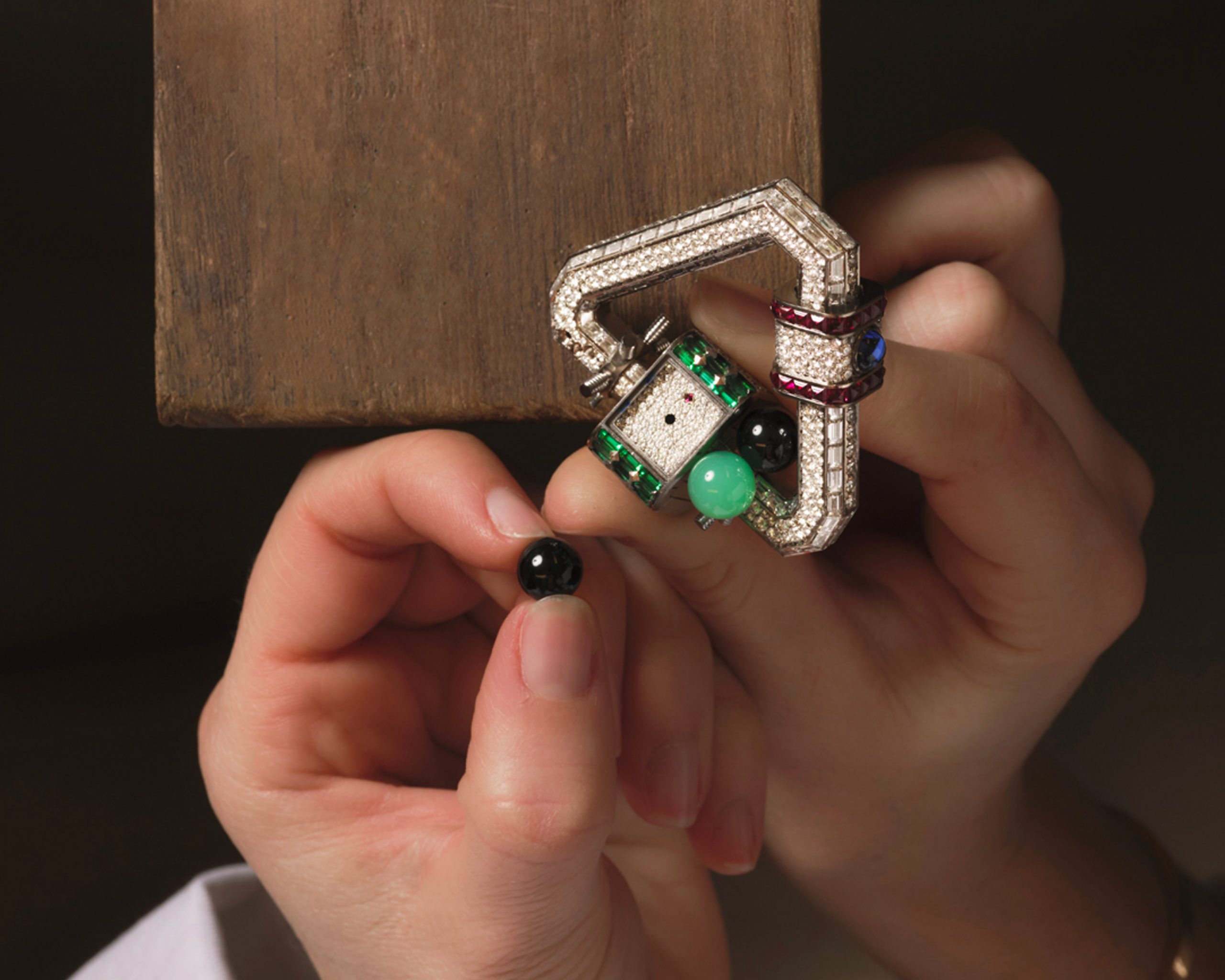
As guests and visitors look on, metalworkers and enamel artists create exquisite works of art using techniques and traditions once on the verge of extinction while innovative and experimenting with their own. Precious metal workers use granulation and filigree, techniques that date back to well before the start of the common era, to create one-of-a-kind reliefs.
Elsewhere, composers, engravers, and master setters experiment across experimental and traditional realms, working with everything from the most precious gems to simple stone, wood, and straw to produce pieces that, regardless of their composition, push the brand’s boundaries of creativity and attention to detail. A typical piece by the Maison des Métiers d’art takes hundreds of hours to produce.
In a world of luxury often defined by sales figures and splashy celebrity endorsements, the artistic merits of a house like Cartier can sometimes be in danger of getting lost among the noise. However, in this revered Maison, one is reminded of the craftsmanship and creativity that sets some institutions apart from the rest.
You may also like.
Golden Touch
Discretion is the better part of glamour at the glittering Maybourne Beverly Hills.
Los Angeles does not want for star wattage, but for years now, the city’s hotel scene has been a little lacklustre. So news that the beloved Montage hotel has been completely redone under the Maybourne brand (the British powerhouse that operates Claridge’s, The Connaught, and Berkeley Hotels in London, and the recently opened Maybourne Riviera on the Côte d’Azur) should come as a boon to Australians looking for a new Tinseltown bolthole.
Situated within Beverly Hills’ famous Golden Triangle, just north of Wilshire Boulevard and Four Season’s Beverly Wilshire, and one block from the world-renowned luxury retailers, restaurants and celeb-spotting of Rodeo Drive, The Maybourne Beverly Hills offers a chic retreat from the designer flexing at its doorstep; a rare escape in the heart of this storied enclave that flies under the radar like a cap-wearing celeb dodging the paparazzi.
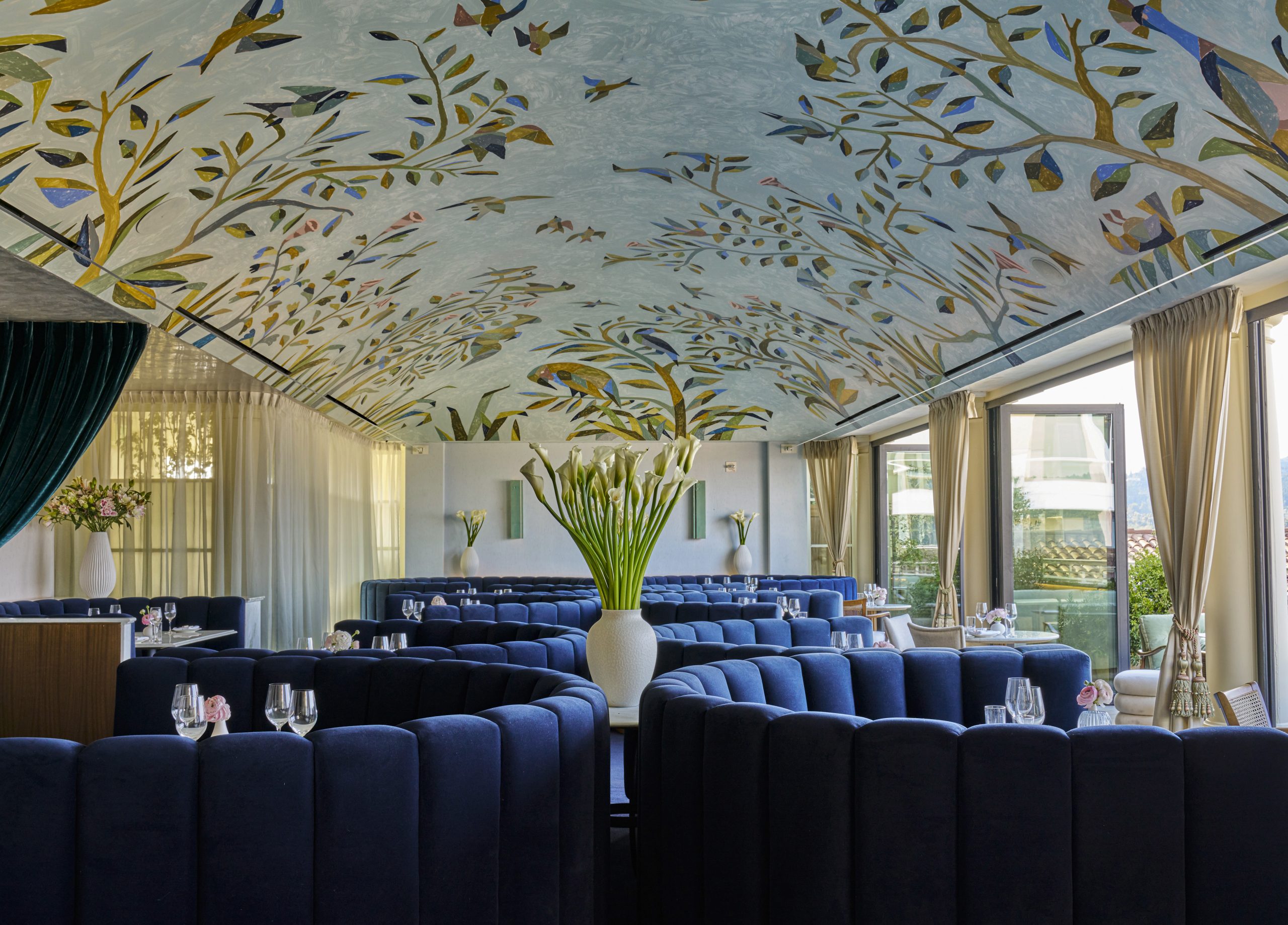
Set amid the manicured, Mediterranean-style Beverly Cañon Gardens plaza, which unfolds from the hotel’s west entrance, the new incarnation of Montage Beverly Hills (55 suites and 20 private residences, each with a balcony or patio with a courtyard or city view) still evokes the grand estates of Old Hollywood while feeling like you’re in a European mainstay.
Revealing a restrained new guestroom and suite design by Bryan O’Sullivan, a blue-chip art collection and some of the most solicitous staff in town, the Maybourne speaks in a laid-back Californian accent but still holds true to the luxury touchpoints of five-star service for which one of the world’s most exclusive neighbourhoods—and hotel brands—is known.
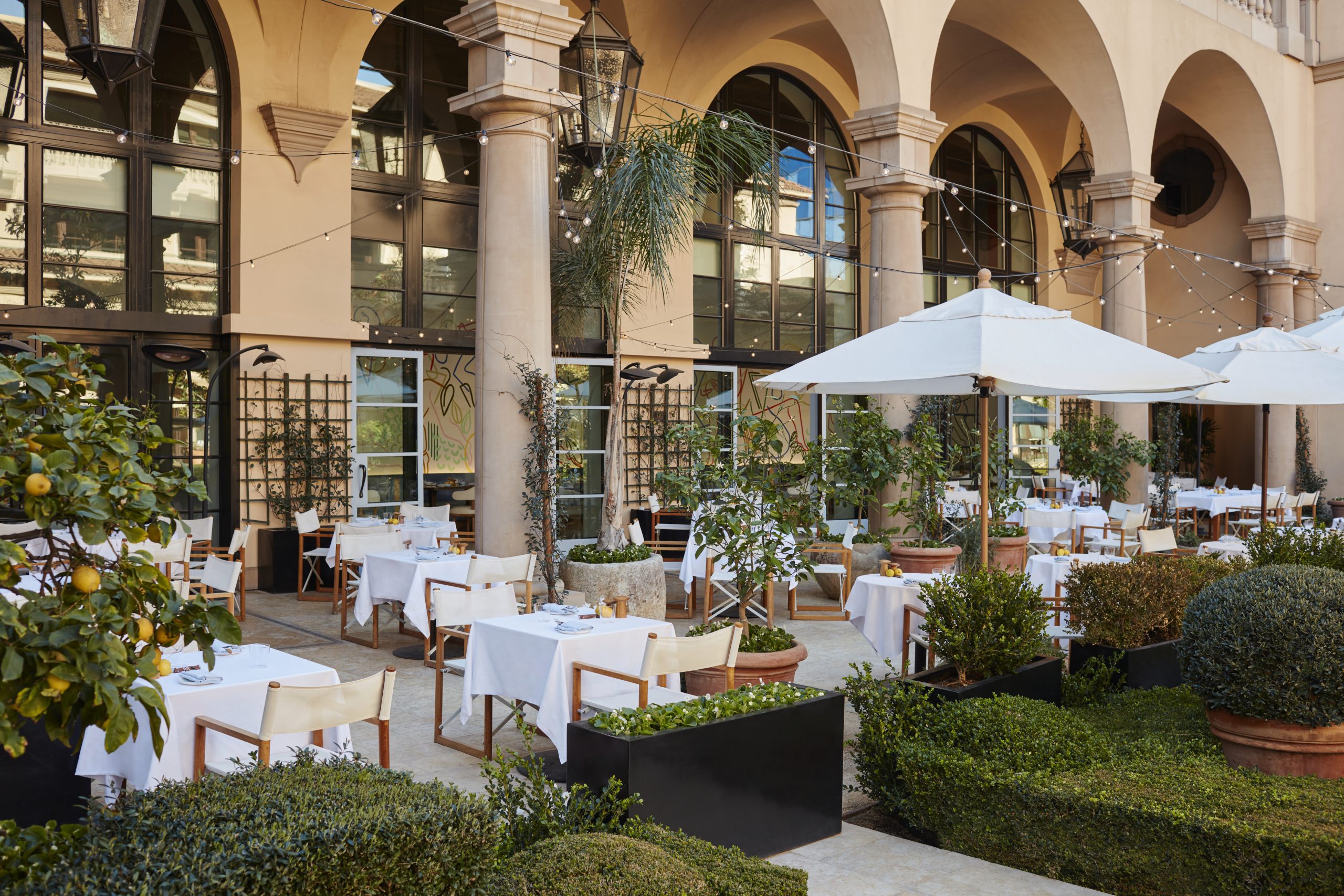
“It’s reassuringly British when it comes to service—it’s a culture of yes,” says Linden Pride, the Australian restaurant and bar owner behind the award-winning Caffe Dante in New York and Bobbie’s, the new speakeasy opening this month below Neil Perry’s new Song Bird restaurant in Sydney’s Double Bay (page 40). Pride should know; he lived at the Maybourne for almost a year while he and his partner, Nathalie Hudson, set up Dante, the stunning new restaurant and bar on the hotel’s ninth-floor rooftop. “Looking out from the roof onto lemon and olive trees, it’s easy to forget that you’re in Southern California, not Europe.”
Opened last year, Dante has quickly become one of the hottest reservations in town, luring in celebrities from Baz Luhrmann and Catherine Martin to the entire Real Madrid soccer team. Like its sister outposts in New York (besides the Greenwich Village original, a West Village location opened in 2020), the focus here is on non-threatening antipasti and aperitivi in a produce-driven menu of fresh familiar stalwarts, with the addition of wood-fired dishes from a giant pizza oven at the heart of the room. Just as it does in New York, a negroni cart does the rounds, and each afternoon is welcomed with a martini happy hour.
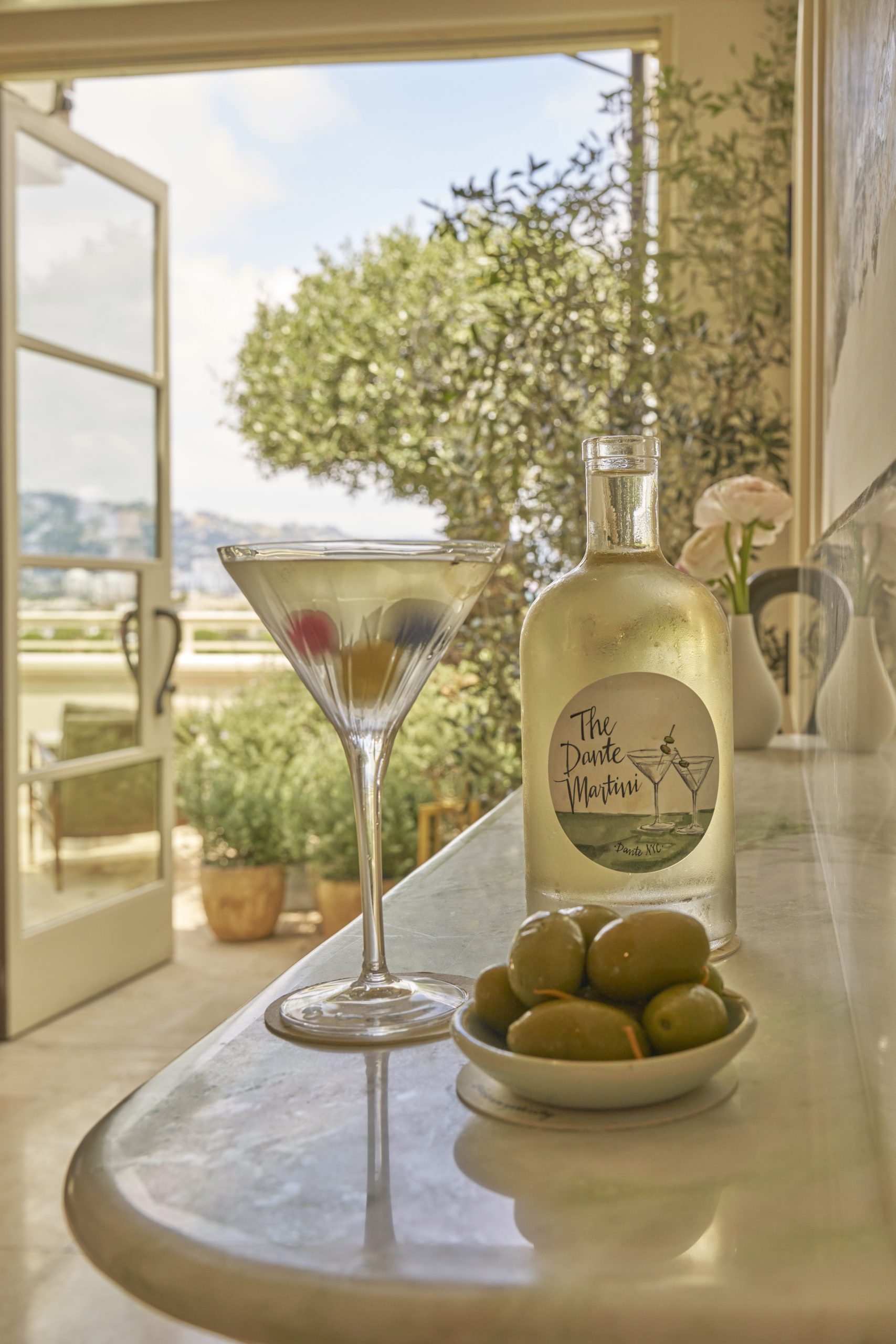
It’s all fittingly Cali-chill. The only drama in the place is a striking ceiling fresco by Los Angeles artist Abel Macias, which dominates the 146-seat room. “Nathalie and I had just been to Europe when we decided to open up here,” Pride recalls, “and the Sistine Chapel blew us away. When we saw the domed ceiling in this room it was a no-brainer.”
Dante joins a string of newcomers in the area, including New York transplants Café Boulud, Marea and Cipriani. Don’t look now, but with arrivals like the Maybourne and Dante, one of the world’s stuffiest cities—yes, Beverly Hills is its own 14.8 km² metropolis—might just be entering a new golden age.






